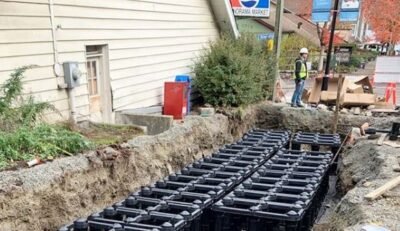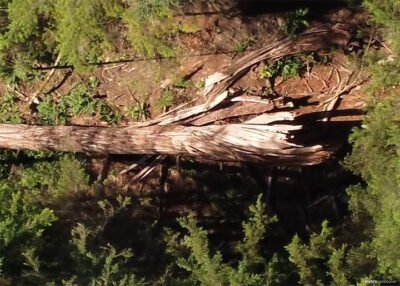Have you noticed ‘inchworms’ dangling from trees in your neighbourhood, lots of needles raining down or brownish trees? You might already be seeing moths, though they won’t appear in full force until August.
This is all related to an outbreak of Western Hemlock Looper moths, which is causing damage to trees and forested areas across the North Shore. The outbreak, which started in 2019, appears to be quite significant, but it is not abnormal.
Although there are no immediate measures that can be taken to control the outbreak, CNV park staff are adding a second watering truck to increase watering and to reduce the stress on the trees.
CNV is also coordinating their efforts with other North Shore municipalities.
Every 11 to 15 years, the moth population spikes and, while they’re still in the larval phase, they feed on the needles of trees, causing them to turn orange or die.
Outbreaks typically last about three to four years, and North Vancouver is currently in year three.
Trees that suffer a low or moderate amount of defoliation typically rebound, but ones that are already stressed or nearing the end of their natural lives will likely die.
However, the combination of defoliation (loss of leaves) from the Looper Moths, extreme heat and drought is putting high stress on our trees and reduces their chance of survival. Climate change is likely exacerbating the outbreak’s impacts, making the trees less resilient.









Comments
NOTE: The North Shore Daily Post welcomes your opinions and comments. We do not allow personal attacks, offensive language or unsubstantiated allegations. We reserve the right to edit comments for length, style, legality and taste and reproduce them in print, electronic or otherwise. For further information, please contact the editor or publisher, or see our Terms and Conditions.